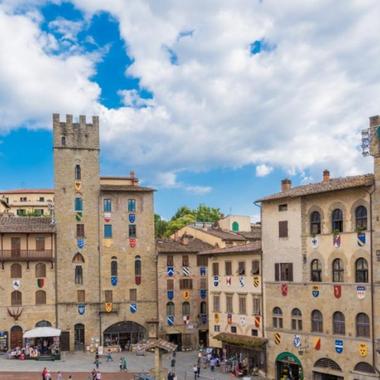Descrizione
Beautiful medieval castle with an outer courtyard surrounded by crenellated walls, situated on top of a hill in the middle of Sabina.
The first news of the castle dates back to 1027, when, by some documents, it can be deduced that the structure became part of the possessions of the Abbey of Farfa. built in a dominant position, the Castle followed for many centuries the fortunes of the Abbey. Later it became a possession of noble Roman families like the Orsini, the Caetani, the Spada, the Vaini and the Marini-Clarelli, and the latter, in 1816, gave up their feudal rights on Sabina's land.
The medieval castle is situated on top of the hill on which stands the eponymous town in the middle of Sabina. This area is characterized by beautiful nature, from a rural economy and especially by the absence of pollution although situated just an hour's drive from Rome and its airport.The castle consists of two buildings, a court-belvedere and a garden. It was structurally consolidated a few years ago even with the electrical system makeover, although today need interventions that will bring it to the splendor it deserves. The area on which there is a complex of about 1660 square meters, located on top of the old town and entirely surrounded by walls.
The buildings, which together measure about 1500 square meters, are two: one main and one of Service. The main building consists of three floors above ground, two of which there are on a surface of about 350 square meters; inside we find large state rooms mostly frescoes, large halls covered with vaulted or coffered wooden ceiling painted with original decorations of severe elegance. The floors are mostly terracotta. The second building (service), is on a surface of about 125 square meters and is divided from the main building by an internal courtyard. It spreads over 3 floors and has no basements. The north end has a guard tower accessible from the 2 floor. Also on the first floor and the ground floor has an appendix in which were placed the stables and the service areas. The roof is with pitched pavilion roof tiles and visible covering.
A special note to the north facing garden, not great, but occupied for about half of its surface by the exceptional foliage of a centuries-old holm oak which is one of the major natural and environmental advantages offered by the area.







































